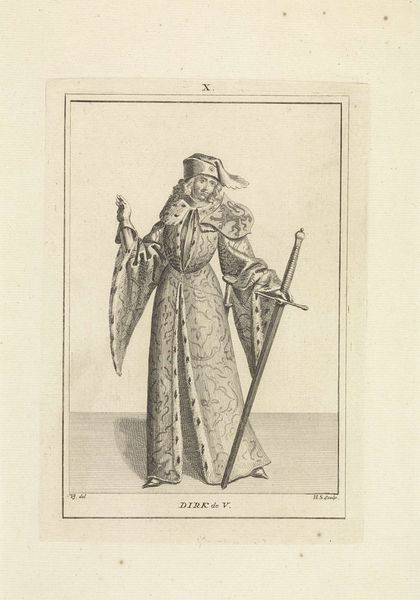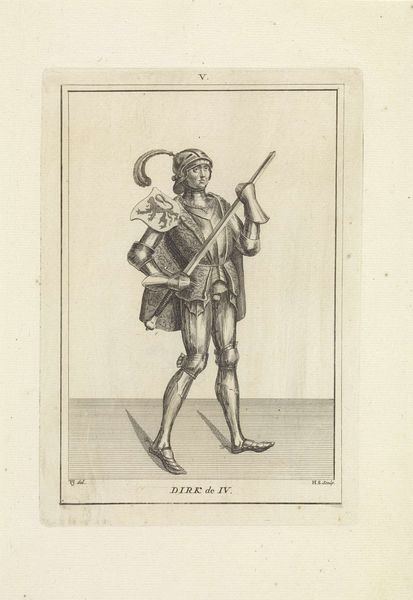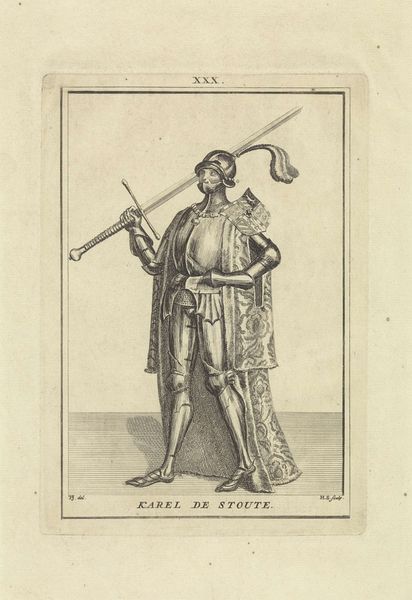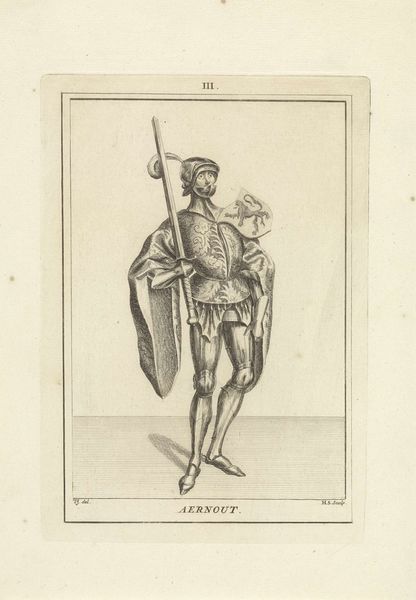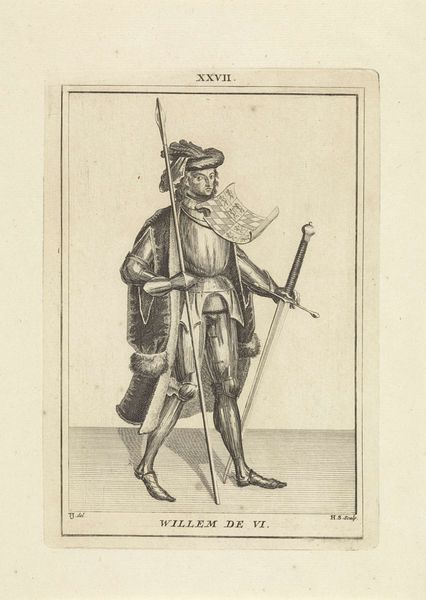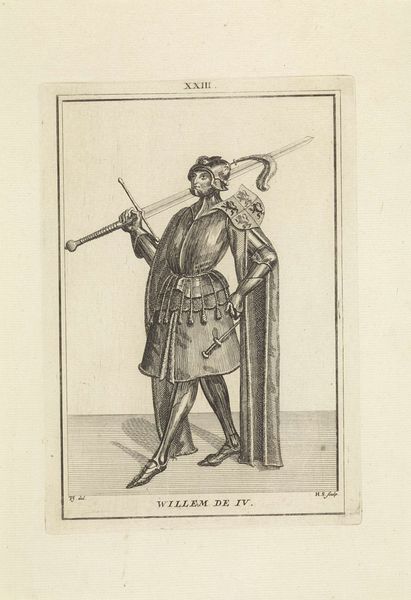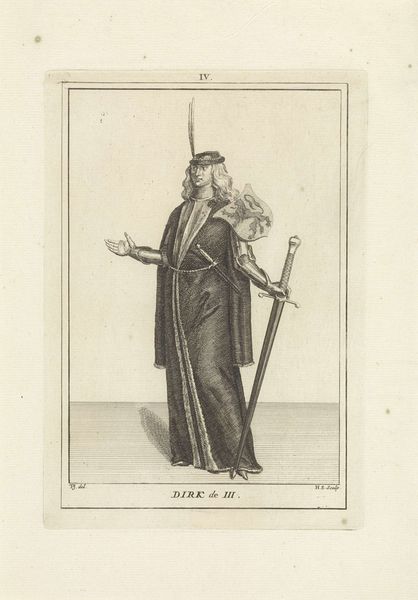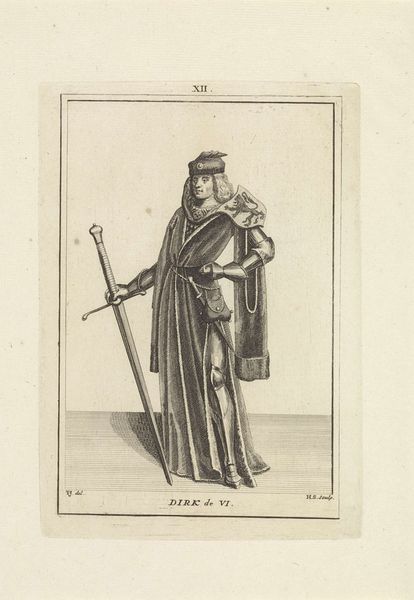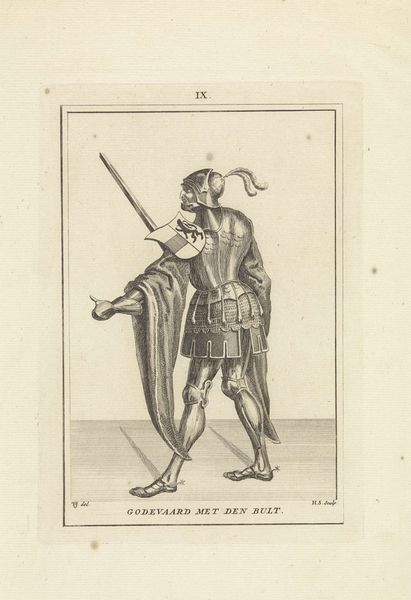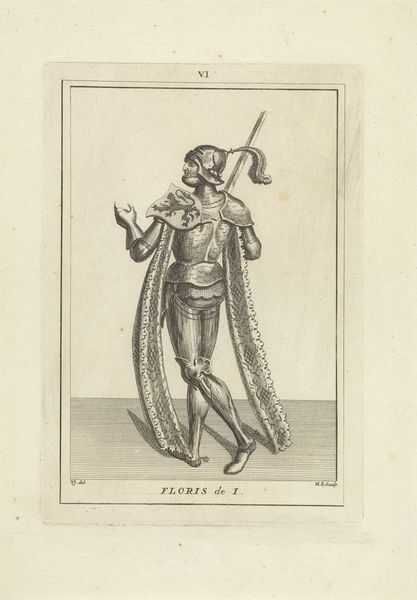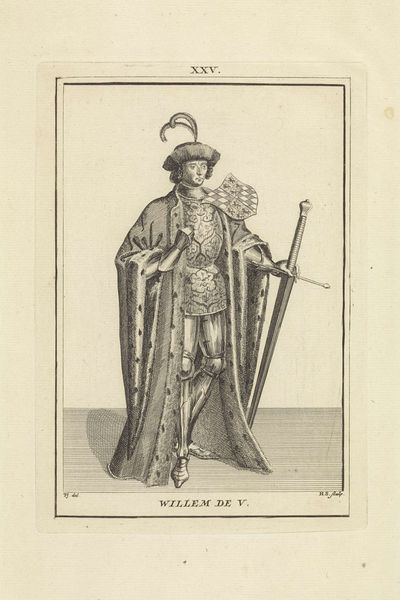
drawing, print, engraving
#
portrait
#
drawing
#
baroque
# print
#
old engraving style
#
history-painting
#
engraving
Dimensions: height 192 mm, width 135 mm
Copyright: Rijks Museum: Open Domain
Editor: This engraving from 1745 by Hendrik Spilman, titled "Portret van Dirk II, graaf van Holland," depicts Dirk II in full armor. It has this austere, almost severe quality about it. What can you tell me about the historical context of a work like this? Curator: This piece prompts us to consider the constructed nature of historical representation. While purporting to depict Dirk II, the count of Holland who lived centuries prior, it was created much later, in the 18th century. This is about nation-building and the visual construction of historical narratives to solidify power. What does the choice of presenting him in full armor signify in that era? Editor: I guess it's meant to emphasize his strength and authority? A connection to a heroic past? Curator: Precisely. Think about the rise of nationalism in the 18th century. Representing historical figures like Dirk II in such a martial, idealized manner contributes to a specific kind of historical myth-making. What ideologies are being visually reinforced here? Consider the implications of a singular, masculine figure being the face of national identity. Editor: So, it’s not just about remembering history, but also about shaping it for a particular purpose? I hadn't considered that. Curator: Absolutely. It asks us to question whose stories are being told, and for whose benefit. It encourages us to interrogate how power structures are reinforced through selective representations of the past, which often marginalizes other voices. How can we reimagine history painting to be more inclusive and challenge dominant narratives? Editor: This has given me a completely new way to consider historical portraiture. It's not just documentation, it's active storytelling with a specific agenda. Thanks! Curator: Indeed. Analyzing the piece this way allows us to explore themes of power, identity, and historical representation, reminding us to be critical viewers.
Comments
No comments
Be the first to comment and join the conversation on the ultimate creative platform.
